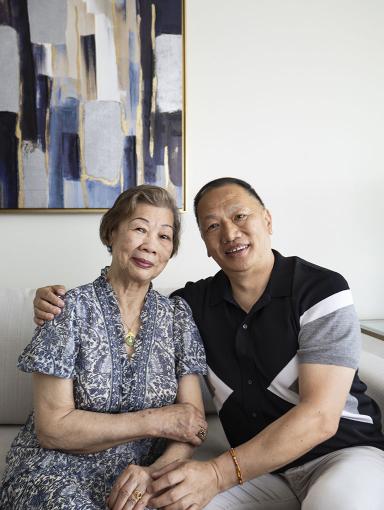Separating the Fat from the Lean
Disentangling the genetics of lean body mass
BOSTON – In a study published on 2/11/19 in the American Journal of Clinical Nutrition, researchers reported they have identified genes associated with lean body mass. This is important because lean body mass, which is comprised mostly of muscle in the body, plays an important role in mobility and metabolic function.
Some heavy individuals have an abundance of both lean mass and fat mass, while others may have a lower amount of lean mass while carrying a lot of fat mass. It is not entirely clear whether genetic factors might determine these proportions. Lean body mass is largely inherited, but the genetic factors determining amount of muscle tissue an individual inherits are largely unknown. This study was able to determine genetic factors that contribute to how much lean tissue an individual has independently of the amount of fat.
According to lead author David Karasik, Ph.D., Associate Scientist in the Hinda and Arthur Marcus Institute for Aging Research, “Only by isolating out the lean tissue can we learn about specific pathways in the body that specifically influence the lean mass compartment separately from the fat compartment. Genetic studies like this that separate the fat tissue from lean can play a role in developing future treatments that keep people more lean as they age.”
The researchers performed a genome-wide association study meta-analysis on whole body lean mass in a set of discovery cohorts (Stage I) and then meta-analyzed the discovery single-nucleotide polymorphisms (SNPs) in replication cohorts (Stage II). A SNP is a variation at a single position in a DNA sequence among individuals and can act as a biological marker, helping scientists locate genes that are associated with disease.
Stages I and II were followed by a combined analysis with discovery and replication cohorts. The total sample size for the combined analysis was 85,519 individuals of European ancestry from 47 studies.
The study was funded by grants from the US National Institute for Arthritis, Musculoskeletal and Skin Diseases and National Institute on Aging (R01 AR 41398 and U24AG051129; DPK and R01AR057118; DK).
About the Hinda and Arthur Institute for Aging Research
Scientists at the Marcus Institute seek to transform the human experience of aging by conducting research that will ensure a life of health, dignity and productivity into advanced age. The Marcus Institute carries out rigorous studies that discover the mechanisms of age-related disease and disability; lead to the prevention, treatment and cure of disease; advance the standard of care for older people; and inform public decision-making.
About Hebrew SeniorLife
Hebrew SeniorLife, an affiliate of Harvard Medical School, is a national senior services leader uniquely dedicated to rethinking, researching and redefining the possibilities of aging. Based in Boston, the non-profit, non-sectarian organization has provided communities and health care for seniors, research into aging, and education for geriatric care providers since 1903. For more information about Hebrew SeniorLife, visit http://www.hebrewseniorlife.org, follow us on Twitter @H_SeniorLife, like us on Facebook or read our blog.
